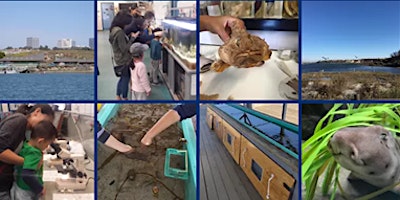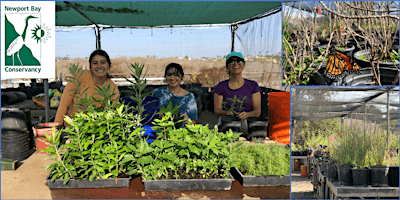
Microscopic Plankton
It’s all about the water
Adapted from an Article by Naturalist Rita Phillips that appeared in the December 2007 edition of Tracks
Upper Newport Bay is an estuary—a place where fresh water and salt water mix. The Bay is home, year-round or seasonally, to over 200 species of birds and nearly 100 species of fish. Clams, mussels, worms and other invertebrates abound in the mud. And while visitors may see the birds diving for fish or picking at clams in the mud, all of these animals are dependent directly or indirectly on the abundant living organisms that are present in the water and can only be seen with the aid of the microscope. Welcome to the fascinating world of aquatic ecosystems.
Living organisms acquire their food in a variety of ways. On land, plants are able to “produce” their own food by using the energy of the sun. The plants are “consumed” by plant-eating herbivores which in turn are consumed by flesh-eating carnivores. All food chains start with many producers at the lowest trophic (feeding) level and end with only a few large carnivores such as a mountain lion or bald eagle at the highest trophic level. In the open water the algae are the producers. Although algae are not plants, they have chlorophyll and are able to produce food by the process of photosynthesis. During this process, organisms use carbon dioxide, water and light to make carbohydrates. The oxygen which is released as a byproduct becomes part of the dissolved oxygen content in the water. It is the dissolved oxygen, and not the oxygen in the water molecule itself, that fish and other animals use for respiration.
Visitors to the Bay see the floating mats of sea lettuce and other large algae, but most of the algae in the water are microscopic phytoplankton. These miniscule plant-like organisms are food for tiny zooplankton (animal-like floating organisms), the next trophic level in a marine ecosystem. The zooplankton include the eggs and larvae of fish that spawn in the Bay. Most of the eggs and larvae are in turn food for the consumers at the next trophic layer, which includes not only fish but also mollusks and many other fascinating marine creatures. Mollusks, such as clams and mussels, filter the water to collect their food. This diverse animal group can be found in the mud flats at low tide where they are a source of food for migratory birds. As we move up the many interconnected marine food chains at the Bay we finally get to top predators such as the leopard shark and the osprey.
We need to recognize the effects we cause to complex food webs through our activities. It is imperative that all species in the food web are viable because they are interdependent. Catching undersized fish clearly threatens the survival of the species, if not enough fish reach maturity and reproduce. As some species of fish may lay as many as a million eggs, this poaching also affects the whole food web.
We also impact the food webs by what we do to the water. The unique chemistry of water allows for the existence of a multitude of organisms in aquatic environments. One characteristic is the transparent nature of water, which permits light to penetrate the surface allowing photosynthesis for various types of producers. Another characteristic is the particular molecular structure of water that allows required nutrients to be able to dissolve in water. Yet another important quality of water is its heat-absorbing capacity. Because the amount of heat energy required to raise its temperature is high, a body of water provides a stable environment for its inhabitants despite large atmospheric temperature fluctuations.
The amount of dissolved oxygen is one important indicator of the quality of water and determines the number of organisms which can be sustained by a particular aquatic environment. Seemingly innocent human activities such as washing cars many miles inland may impact dissolved oxygen at the Bay. The soapy water gets carried by the storm drain system to the Bay. Some chemicals in soaps act as fertilizers and can cause an excessive growth of algae—an algal bloom. As the algae die off, large amounts of oxygen are used in the decomposition process. The dissolved oxygen level may fall so low that fish and other aquatic organisms may not be able to survive.
We must develop an awareness of how organisms depend upon each other. Local educators, students and the community are key parts of this awareness. We can establish guidelines for educational investigations involving local marine environments. Incorporating sound analysis and process skills is vital, too. Educators should motivate their students to gain an understanding of the importance of water quality to the survival of organisms in Upper Newport Bay and other nearby coastal areas. There can be intrigue, inquiry, problem solving and analysis, all in one experience. Perhaps you have seen the delicate stages of sea urchin embryology under a microscope. How this embryo is able to survive long enough to become an adult is dependent on water quality as well as other environmental factors such as human impact. This and many more topics can be addressed in an inquiry based learning environment. The study of marine biology topics with hands-on problem solving techniques will prepare the youth of today with the skills necessary to be the guardians of our ecosystems for many years into the future.








